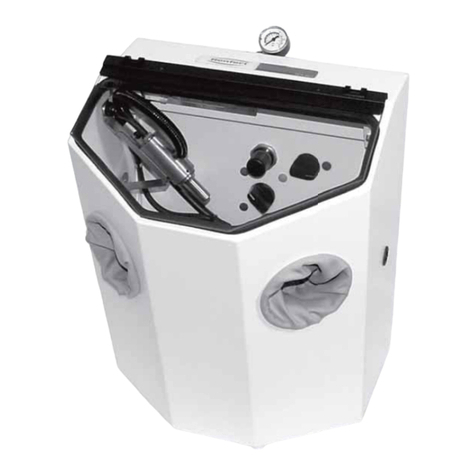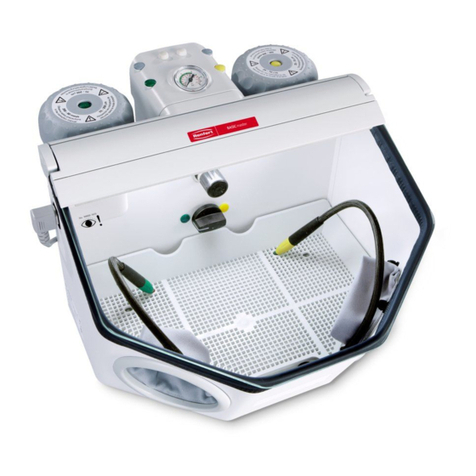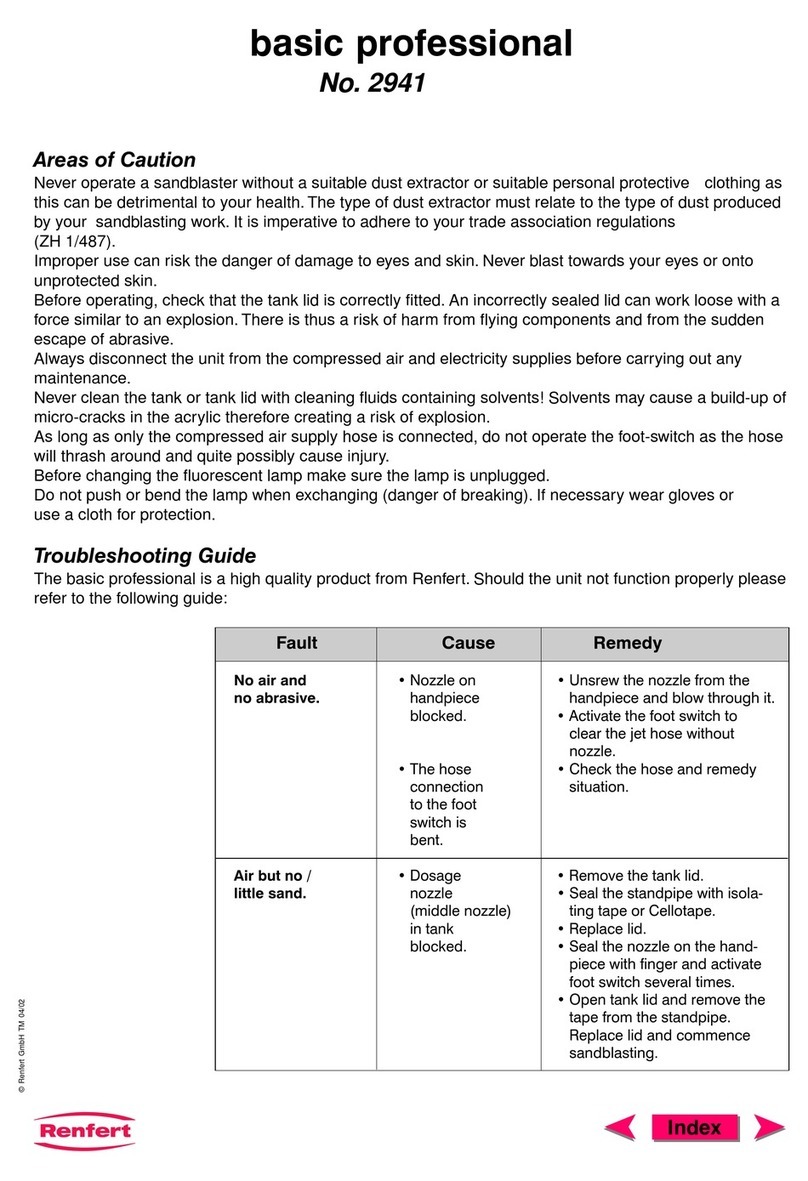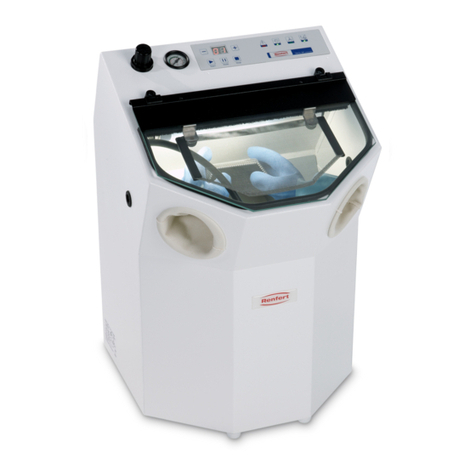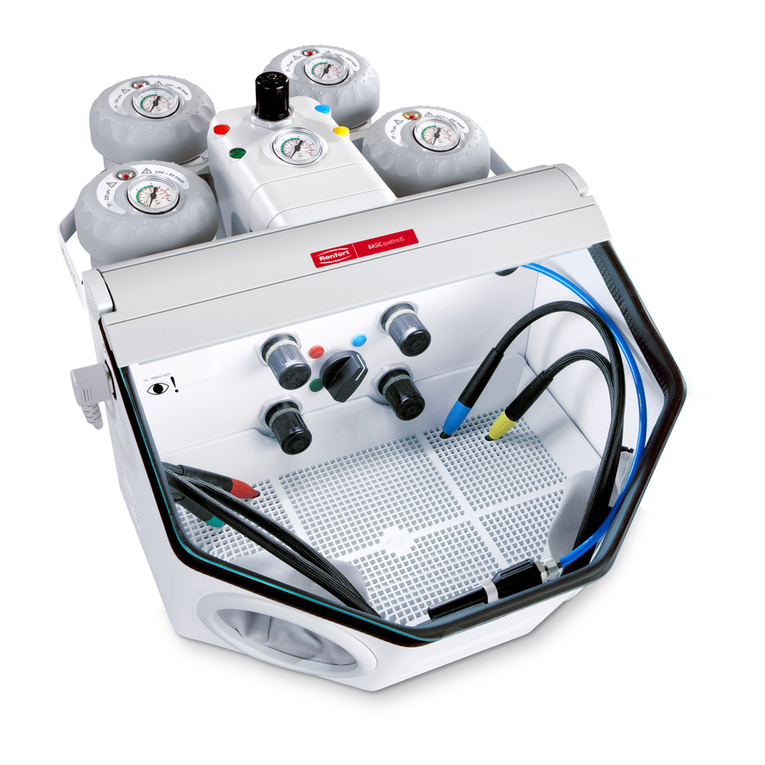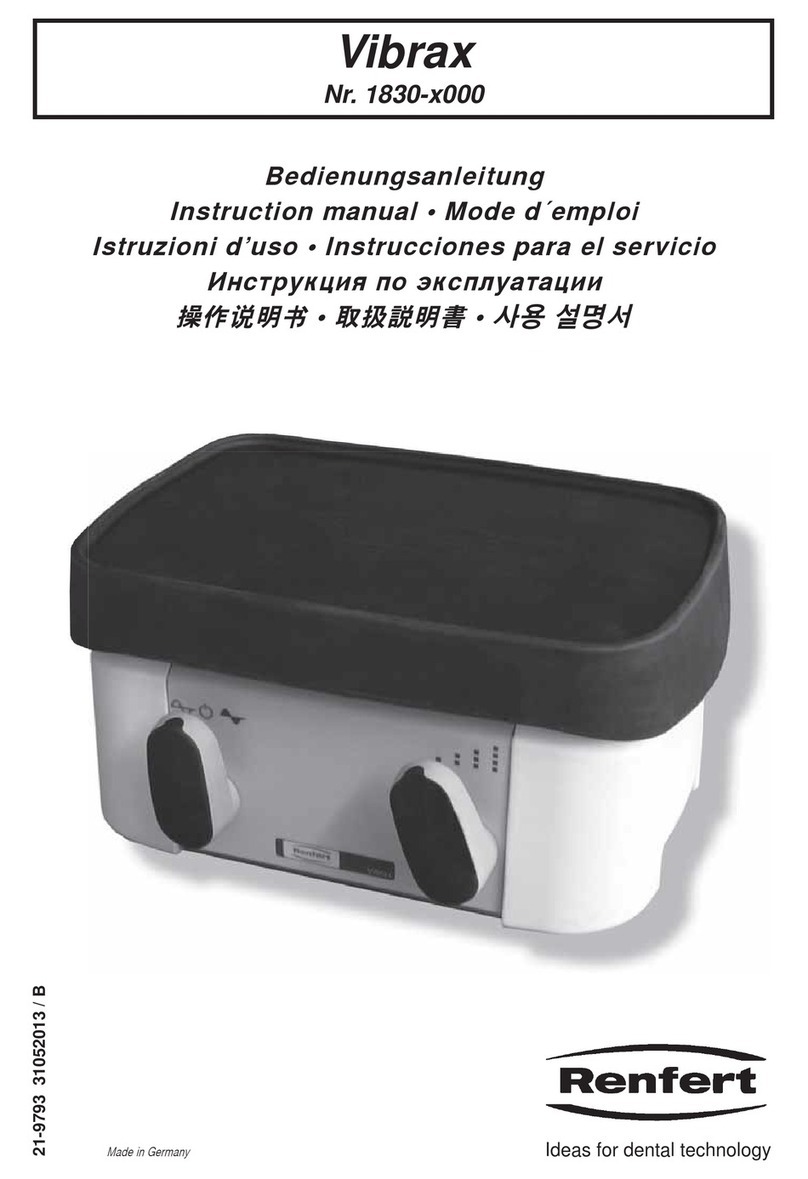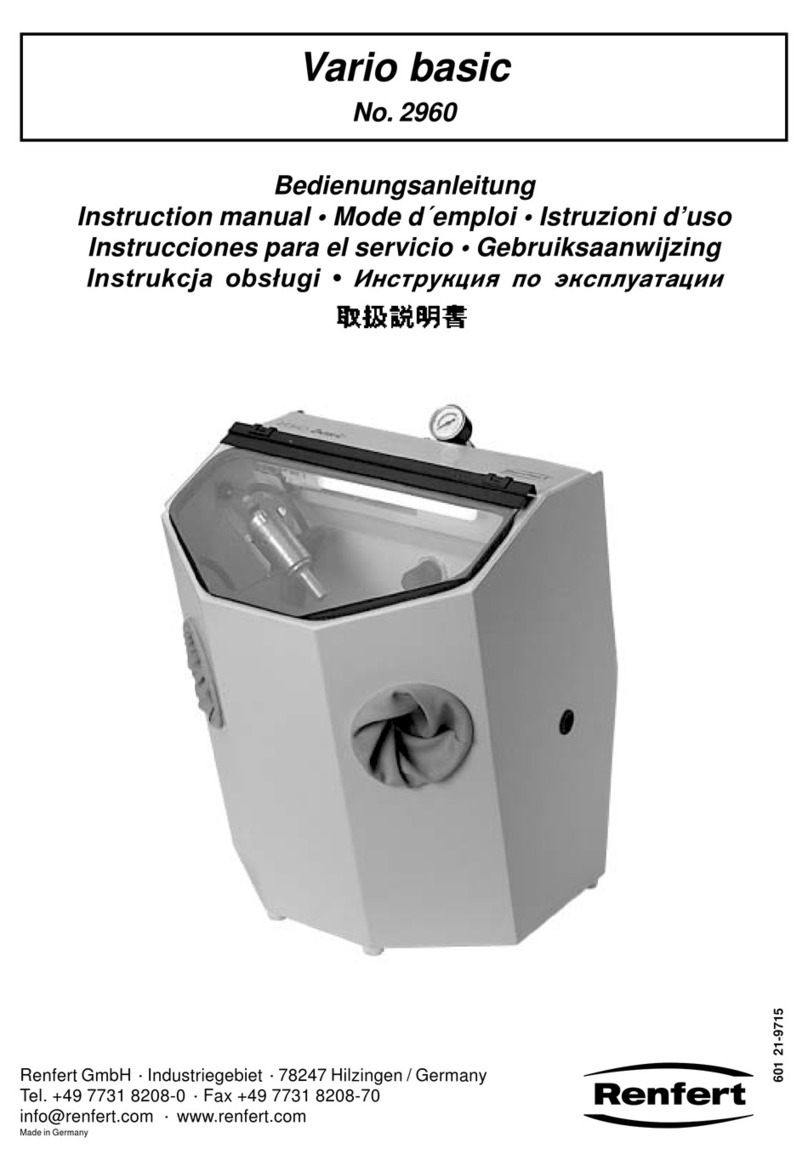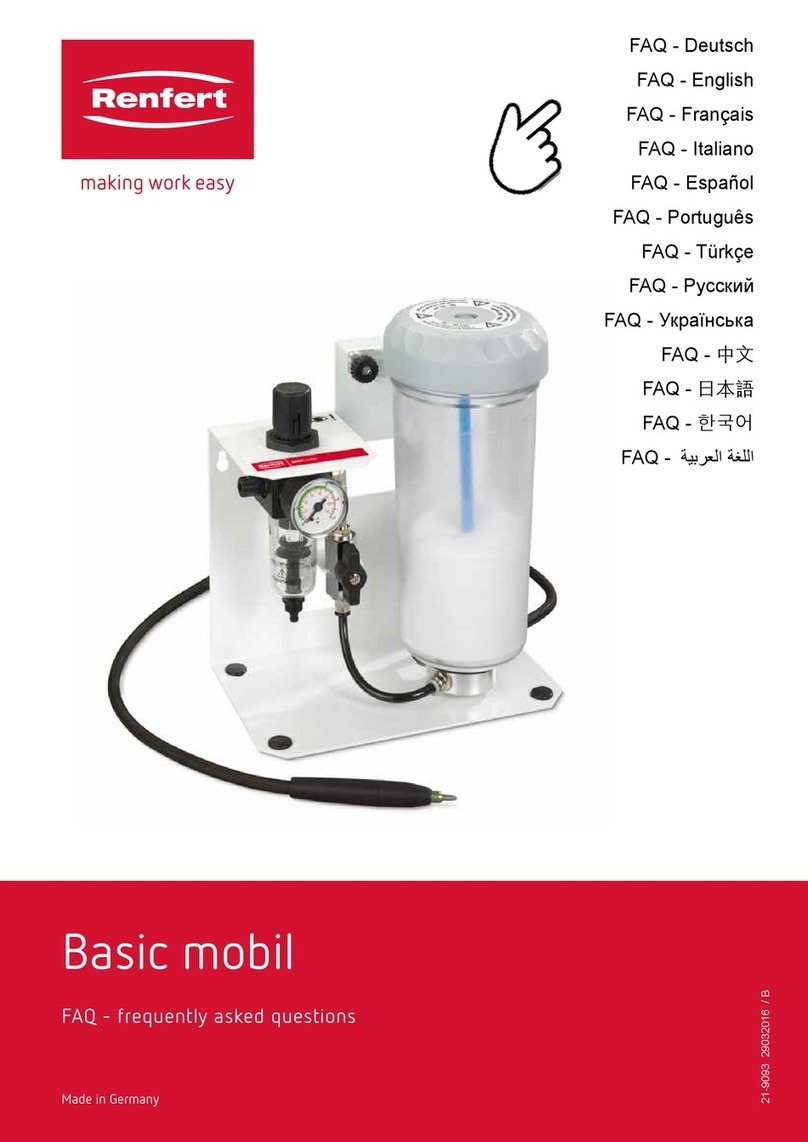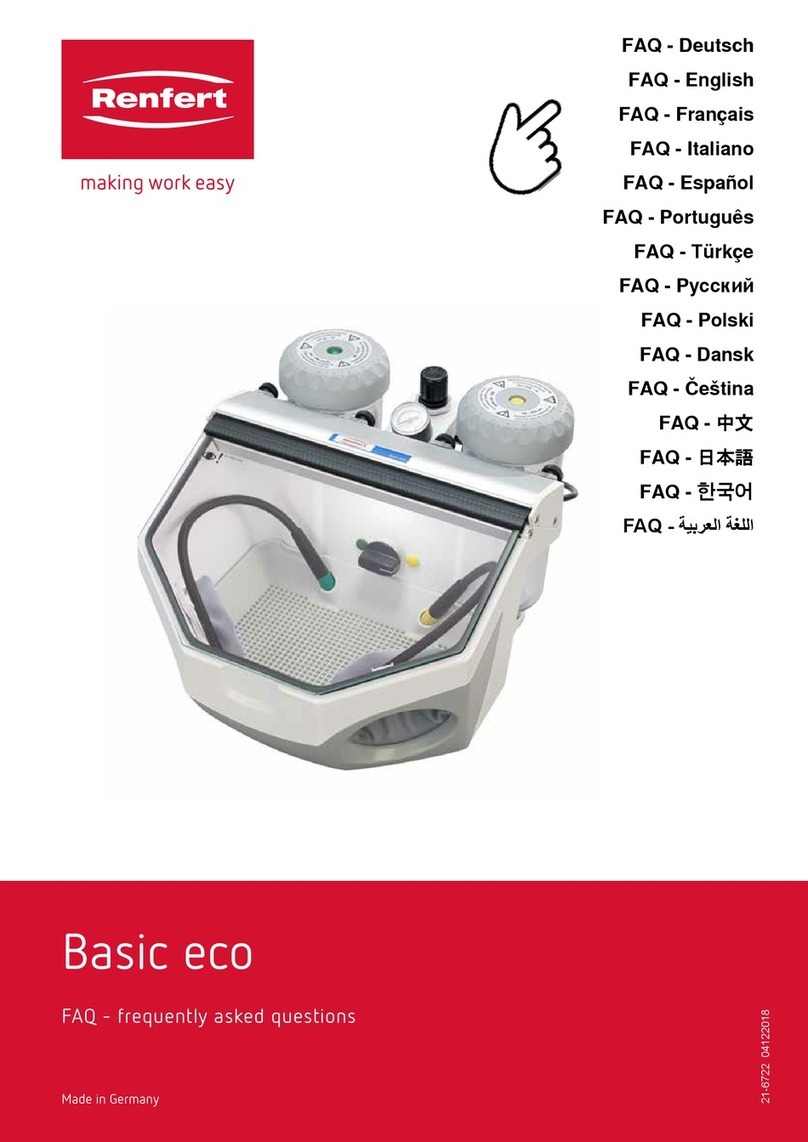
- 2 -
EN
2. Safety
Inform the operator about working procedures, possible operating hazards and actual operation of the unit
with these user instructions.
Ensure that these instructions are available for the operator.
2.1 Intended use
The Basic line of sandblasting units are designed for use in dental laboratories to remove investment residues, oxides
on cast objects, and for surface treatment.
Other areas of use also include divesting press ceramic or sandblasting porcelain occlusal surfaces.
2.2 Improper use
2QO\WKH¿WWLQJVDQGVSDUHSDUWVVXSSOLHGE\5HQIHUWPD\EHXVHGLQWKLVXQLW7KHXVHRIDQ\RWKHU¿WWLQJVLVFRQVLGH-
red improper and carries the risk of severe injuries.
2.3 Environmental conditions for safe operation.
6DIHRSHUDWLRQRIWKLVXQLWFDQEHJXDUDQWHHGXQGHUWKHIROORZLQJFRQGLWLRQV
- Indoors,
- Up to an altitude of 2,000 m [6,500 ft] above sea level,
- At an ambient temperature of 5 - 40°C [41 - 104°F] *),
- At a maximum relative humidity of 80% at 31°C [87.8°F], decreasing linearly to 50% relative humidity at 40°C [104°F] *),
- :LWKDPDLQVSRZHUVXSSO\ZKHUHFXUUHQWÀXFWXDWLRQVGRQRWH[FHHGRIWKHQRPLQDOYDOXH
- Under level 2 contamination conditions,
- Under overvoltage category II conditions.
*) Between 5 – 30°C [41 - 86°F], the unit can be operated at a relative humidity of up to 80%. At temperatures between 31 - 40°C [87.8 - 104°F], the humidity must decrease
proportionally in order to ensure operational readiness (e.g., at 35°C [95°F] = 65% humidity; at 40°C [104°F] = 50% humidity). The unit may not be operated at temperatures
above 40°C [104°F].
2.4 Hazards and warnings
ŹIf the unit is not used according to the instructions for use, then protection can no longer be guaranteed.
ŹThe unit may only be used together with a mains cable with a country speci¿c plug system. If a plug e[-
change is necessary, this may only be undertaken by a skilled electrician.
ŹThe mains plug must be easy to access.
ŹPower supply cords and tubes (e.g. the mains cable) must be checked regularly for damage (e.g. kinks,
cracks, porosity) or aging. Units with damaged power supply cords, tubes or other defects must not be
used.
ŹRisk of Injury!
If unauthorised attachments are used, there is a danger of injury. 2nly original Renfert ¿ttings and acces-
sories may be used.
ŹPlease observe the accident prevention regulations provided by the „employer‘s liability insurance associ-
ation“!
ŹAlways disconnect the unit from the compressed air and power sources prior to beginning any mainte-
nance work.
ŹWhen working on the tank (¿lling up, cleaning, maintenance) wear protective glasses for protecting your
eyes.
ŹAny residue of abrasive material on the gasket may lead to leakage and early wear of the gasket. After
¿lling up clean the thread and the gasket and close the lid properly.
ŹSolvents and tensides can create micro-cracking in the plastic (danger of explosion!). Clean the tank and
the lid only with a dry cloth. Do not write or stick something on the tanks.
ŹDo not unscrew the tank lid as long as the pressure had not been released.
ŹCheck the tanks and the lids regularly on damages and replace them in case of doubt.
ŹCheck the tank cover for correct seating prior to beginning operation. Covers that are not securely closed
can suddenly be blown off as the tank pressure increases. The resulting Àying parts and abrasive repre-
sent a serious hazard.
ŹNever operate the blasting units without suitable dust extraction and appropriate protective gear, as this
could result in health hazards. The type of dust extraction should be selected on the basis of the dust
being generated. Follow here absolutely EN 60335-2-69 appendix AA or ask the appropriate authorities.
ŹImproper use can result in the risk of eye or skin injuries.
ŹNever direct the blasting material towards eyes or unprotected areas of skin!
ŹNever work with the view screen open!
ŹCaution: Failure to wear proper eye protection can result in eye injury due to particles suspended in the air.
Always wear proper eye protection to protect your vision!
ŹDo not employ the foot switch when only the compressed air supply hose is connected. The loose hose
could wrap around itself and cause serious injury.
EN

